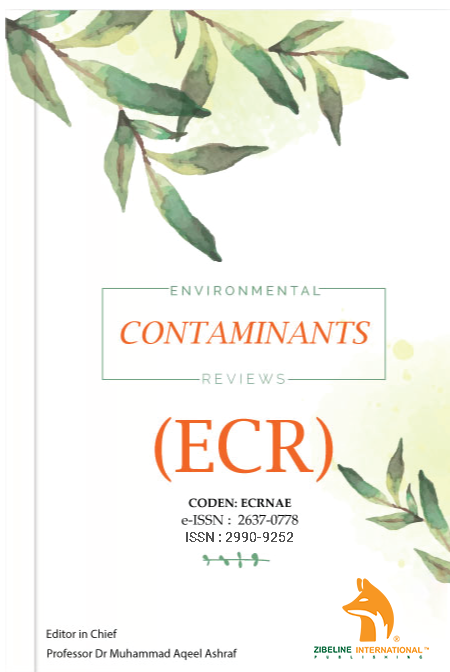
ANALYSIS OF THE CURRENT ECOLOGICAL SITUATION OF THE KURA RIVER BASED ON THE DETERMINATION OF FOUR MICROBIOLOGICAL PARAMETERS: TOTAL COLIFORM BACTERIA, E. COLI, ENTEROCOCCUS AND TOTAL VIABLE COUNT (37°)
Journal: Environmental Contaminants Reviews (ECR)
Author: Mahammad Abduyev, Elchin Aliyev, Jozef Breidenbach
This is an open access article distributed under the Creative Commons Attribution License CC BY 4.0, which permits unrestricted use, distribution, and reproduction in any medium, provided the original work is properly cited
Doi:10.26480/ecr.01.2025.07.13
ABSTRACT
This study aims to evaluate the current ecological situation of the Kura River based on the determination of its microbial quality. Water samples were collected from different points along the Kura river between autumn 2020 and winter 2022. The samples were subjected to four bacteriological analyses to monitor indicator parameters, such as Total coliforms, E.Coli, and Enterococci, and heterotrophic parameters, such as Total viable counts (TVC) at 37°C. The results of the faecal indicator count indicated that their densities increased with the number of inhabitants in the surrounding area. The bacteriological analyses showed that the TVC ranged from 154 to 803 cfu/ml at 37°C and that the counts increased from upstream to downstream. However, the highest counts were observed during spring, while the lowest counts were detected in winter. Overall, the findings of this study suggest that the water quality of the Kura River was good and not significantly impacted by sewage pollution during the study period.
KEYWORDS
Indicator bacteria, heterotrophic bacteria, Kura river, pollution

